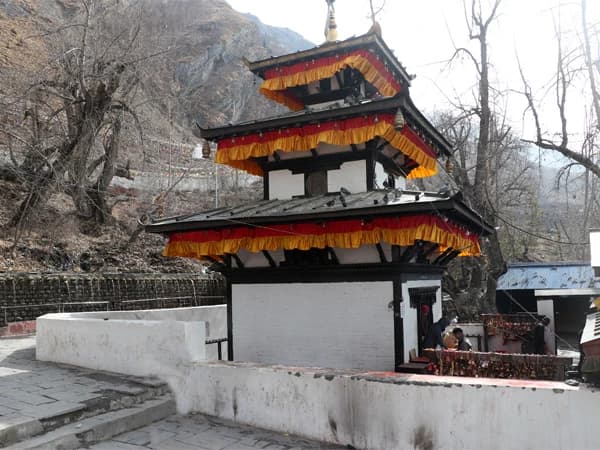Nepal is the perfect destination for Yoga and Meditation. The beauty of this land connects people with their spirit arousing thirst for deep awakening.Yoga is a Sanskrit word which means unification. It is a process of union to cosmos through different techniques which will discipline the body and mind. The ultimate goal of every religion lies in the unison of self with the cosmos but the methods and techniques vary.
There are mainly two types of Yoga—Hatha Yoga and Raja Yoga.
Hatha means force. Following this branch of Yoga helps you to discipline the body by practicing the different techniques of physical postures. It is said that Lord Shiva is the founder of Hatha Yoga.
Raja Yoga, on the other hand, directly tries to establish union with the cosmos without practicing any kind of physical posture. It does not focus on the hardships. It is comparatively easy and simple than Hatha Yoga.
Moreover, meditation is slightly different than Yoga. It is comparatively simple which tries to concentrate in between two eyebrows. The process goes on until you unite with the cosmos. It is gaining popularity in modern world. Lord Buddha cited several techniques of meditation.
To sum up, both Yoga and Meditation helps to control mind and body. Every age group can practice Yoga and Meditation for the betterment of life. To live stress free life it is essential.The different Yoga and Meditation Package designed by Regulus will benefit tourists in multiple ways. First of all, it helps to relax yourself. Similarly, the techniques of Yoga will bring you closer to nature as you learn the process of being natural. The regular practice of Yoga will add positivity in your life. You start looking positive dimensions of life. This helps to drag out you from the depression.
Regulus has designed different types of Yoga and Meditation packages of which Meditation course in Kopan Monastery, Vipashyana Meditation, Osho Tapoban, Lumbini are some of the popular courses offered by the organization.
All of these packages are operated by the Gurus who are versed in Yoga and Meditation.
Popular Yoga Trekking Routes in Nepal
This trek combines the iconic Everest Base Camp route with daily yoga sessions. You'll practice yoga with views of the world's highest peaks, adding a spiritual dimension to your adventure.
A shorter trek that's perfect for those with limited time, the Ghorepani Poon Hill Yoga Trek is famous for its sunrise views from Poon Hill. Daily yoga and meditation sessions complement the cultural experiences you'll encounter along the way.
The Muktinath trek is a spiritually significant journey, leading to the sacred Muktinath Temple. Along the way, you'll engage in meditative practices that deepen your connection to this holy site.
For those seeking solitude and a profound meditation experience, the Upper Dolpo trek is unmatched. This remote and challenging route takes you through some of the most untouched regions of Nepal, where deep meditation practices are nurtured by the silence of the mountains.
Preparing for a Yoga Trek in Nepal
Best Time to Go
The best time for a yoga trek in Nepal is during the pre-monsoon (March to May) and post-monsoon (September to November) seasons. These periods offer the most stable weather, with clear skies and moderate temperatures, ideal for both trekking and yoga.
Fitness and Training
Physical preparation is key for enjoying your yoga trek. Incorporate yoga into your regular routine to improve flexibility and stamina. Cardiovascular training, such as running or cycling, will help build the endurance needed for trekking at high altitudes.
Essential Gear and Packing List
Packing the right gear ensures comfort and focus on your trek. Essentials include a lightweight yoga mat, comfortable trekking shoes, layered clothing for varying temperatures, and a small meditation cushion. Don’t forget to pack mindfulness essentials like a journal for reflection and a reusable water bottle.
What to Expect on a Yoga Trek in Nepal
Daily Itinerary Breakdown
A typical day on a yoga trek begins with a sunrise yoga session, followed by breakfast and a few hours of trekking. Afternoons might include a guided meditation or another yoga session, with the day ending in a local tea house or tented camp, where you can relax and reflect.
Accommodations and Meals
Accommodations on yoga treks range from cozy tea houses to tented camps, depending on the route. Meals are typically vegetarian and focus on nourishing, local ingredients that support both physical and mental well-being.
Health and Safety Considerations
Altitude is a critical factor in trekking in Nepal. Acclimatization is built into most itineraries, but it’s important to listen to your body and take it slow. Ensure you're staying hydrated and eating well to maintain your energy levels.
Choosing the Right Yoga Trek for You
Factors to Consider
When choosing a yoga trek, consider the difficulty level of the trek, your personal fitness, and your experience with yoga. Some treks, like the Everest Base Camp Yoga Trek, are more challenging, while others, like the Ghorepani Poon Hill Trek, are suitable for beginners.
Recommended Yoga Trekking Providers
Choosing the right provider is essential for a successful experience. Look for reputable tour operators like like Regulus Nepal who offer experienced guides, well-planned itineraries, and a focus on both yoga and trekking.
Why You Should Consider a Yoga Trek
A yoga trek in Nepal is more than just an adventure—it's an opportunity to reconnect with yourself in one of the most beautiful places on Earth. Whether you're looking to deepen your yoga practice, challenge yourself physically, or simply find peace in nature, a yoga trek offers all of this and more.
The Long-Term Benefits of Yoga and Trekking
Combining yoga with trekking has long-term benefits for both body and mind. The physical challenge of trekking builds strength and endurance, while yoga fosters mental clarity and emotional balance. Together, they create a holistic approach to wellness that you can carry with you long after your trek is over.







